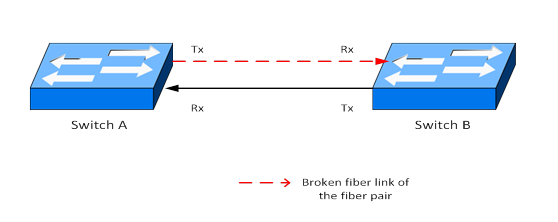Overview of device link detection protocol (DLDP)
- Aruba 2530 Switches
- Aruba 2920 Switch
- Aruba 2930F Switches
- Aruba 2930M Switches
- Aruba 3810 Switches
- HPE 5400R Switches (both v2 and v3 blades)
Device link detection protocol (DLDP) is switch technology that detects any unidirectional link failures that can occur in a network. Typically these unidirectional link failures occur among devices connected through fiber-optic or copper twisted pair (such as category 5 twisted pair) cables. Upon detecting a link failure, the link PHY will be kept
UP and will be blocked in the hardware. All the upper layer protocols of the switch software (STP, LACP, and so on) will see the interface as
DOWN.
Enabling and disabling DLDP: Enable or disable the Device Link Detection Protocol (DLDP) to monitor link status. DLDP must be enabled globally and on one or more interfaces to begin monitoring. DLDP is disabled by default.
Advertisement interval: This is the interval between sending DLDP advertisement packets. Setting the DLDP advertisement interval appropriately for your network environment assures that DLDP can detect unidirectional links before network performance deteriorates. Hewlett Packard Enterprise recommends keeping the advertisement interval the same across the link partners or DLDP can fail and produce an error log.
DLDPDUs are sent as untagged PKTs on default VLAN. No support for tagged advertisements.

DLDP can be enabled on a maximum of 128 ports with each DLDP enabled port can have up to 4 neighbors (with the exception of the switch 2530.
On the Switch 2530, DLDP can be enables on a maximum of 12 ports with each DLDP enabled port allowed up to 4 neighborhoods.
